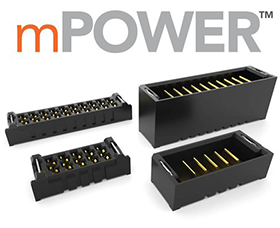
.png)
[Sponsored] Signal integrity has received a lot of attention over the last decade. As industries around the world embrace next-generation technologies, whether in the energy, communications, or industrial sectors, the need to transmit more data at higher speeds with less information loss has become paramount. However, behind every high-speed system lies the need for power integrity (PI). Without it, even the cleanest signal paths become compromised.
A stable, efficient power supply has always been essential, but the role that power has in ensuring high-speed communications means that PI has become every bit as important as its signal integrity counterpart.
Power integrity, at its simplest, is the delivery of power to electronic systems within acceptable limits, regardless of the dynamic conditions found in real-world applications. While signal integrity is often summarised as ‘more signal, less noise,’ power integrity is the pursuit of stability with a lower risk of fluctuation.
The foundation of power integrity lies in the distribution network - the complete path of current from the supply to the point of use. A robust distribution network minimises voltage ripple at the load, even when the consumer device suddenly changes its current draw. High-speed communications provide a useful example. The scalability of data centres means that sudden changes in processor demand can place enormous stress on the power distribution network. Without stable PI, performance drops sharply, no matter how fast the interconnects are.
Delivering Reliable Power
These fluctuations are typically caused by switching components such as processors, FPGAs, or power electronics. If unchecked, they can produce voltage spikes or dips that degrade system performance. In some cases, this can cause an outright failure. Decoupling capacitors play a role in smoothing out this noise, especially when they are placed close to the load. Passive components alone are not enough. The interconnect elements of the power network are critical to maintaining stability. This includes not only connectors, but also the cables and PCB traces that carry power.
Just as signal integrity is shaped by impedance and crosstalk, power integrity is influenced by the series resistance and the series inductance of every element in the distribution network. The resistance primarily determines DC losses, which appear as a voltage drop across the system. Inductance has a more subtle but still significant effect on AC transient noise. Designers often account for connector resistance, but inductance is less familiar territory. In general, higher inductance requires a greater number of decoupling capacitors to keep noise within acceptable levels. The design of a connector can significantly affect inductance, and the arrangement of power contacts plays a decisive role in overall network performance.
The geometry of the connector is only part of the story. For years, PCB layout diagrams have provided designers with the mechanical details required to mount connectors, covering placement, spacing, and plating. Until recently, this information was considered sufficient.
Designing For Power
The growing awareness of signal integrity has highlighted the role of the Break-Out Region (BOR), the name given to the zone in which signals leave the connector itself and make the transition onto the PCB. Even the best connector design can be undermined by a poor BOR layout. As a result, manufacturers like Samtec are providing customers with optimised designs to create a clean interface at the edge of the BOR, with signals that are ready to be processed.
Signal integrity is only part of the battle. Power plays an enormous role in the future of our data networks. Exact predictions vary depending upon the source, but some estimates suggest that, by 2030, data centres could consume as much as 4% of global electricity. Just as signal integrity is vital to the quality of our communications, so power integrity (PI) will be just as important in ensuring the smooth running of data centres worldwide.
The Complete Solution
Achieving true system performance depends on treating signal integrity and power integrity as equal priorities. A connector that preserves high-speed data paths while delivering clean, stable power is essential to ensuring that advanced systems operate reliably under demanding conditions. Samtec recognises this challenge and partners with its customers not only by delivering world-class interconnects, but also by providing the insight and design resources needed to integrate them effectively. From optimised break-out region reference designs to simulation support, Samtec helps engineers achieve a balance of speed, stability, and efficiency.

Central to this approach are products such as the Samtec micro power connector, which combines compact size with the ability to deliver significant current. Designed for applications where board space is limited, but performance cannot be compromised, it is one example of how Samtec equips customers with both practical solutions and collaborative support. With local support from Spectrum Concepts in South Africa, Samtec delivers connectors for the next generation of high-speed, high-power systems.
| Tel: | +27 11 425 1400 |
| Email: | [email protected] |
| www: | www.spectrumconcepts.co.za |
| Articles: | More information and articles about Spectrum Concepts |

© Technews Publishing (Pty) Ltd | All Rights Reserved